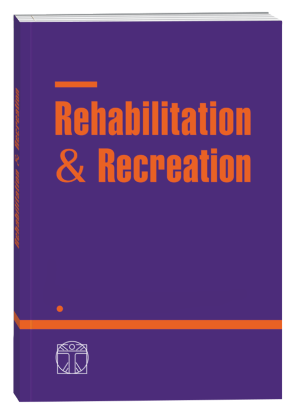CARDIOVASCULAR EFFECTS OF THE YUMEIHO THERAPY PROCEDURE AND THEIR EVALUATION
DOI:
https://doi.org/10.32782/2522-1795.2022.12.10Keywords:
Yumeiho therapy, blood pressure, heart rateAbstract
The purpose of this study was to determine the main effects of Yumeiho therapy on the cardiovascular system. Material. The research was conducted on the basis of the Yumeiho Center (Lviv) during 2020-2022. 29 women aged 38.7 (32.0; 52.4) years and 26 men aged 35.8 (29.0; 46.6) years were under supervision. All individuals were practically healthy and had nonspecific signs of the spine osteochondrosis, which were characterized by periodic pain associated with prolonged forced standing, sitting, or physical work. All visitors to the Yumeiho Center had their blood pressure and heart rate measured while lying down before and after the procedure. An analysis of measurements of cardiovascular system indicators during 1014 Yumeiho therapy procedures was carried out. Of them, 427 are men and 587 are women. The results. The effect of the Yumeiho therapy procedure on the cardiovascular system consisted in reducing the heart rate as a whole in the group from 70.0 (63.0; 78.0) to 62.0 (58.0; 67.0), p = 0.000, as well as in men from 69.0 (62.0; 78.0) to 63.0 (58.0; 69.0), p = 0.000, and in women from 71.0 (64.0; 78.0) to 61.0 (57.0; 66.0), p = 0.000; increase in diastolic blood pressure as a whole in the group from 76.0 (71.0; 81.0) to 78.0 (73.0; 84.0), p = 0.000, in men from 77.0 (72.0; 83.0) to 80.0 (75.0; 86.0), p = 0.000; in women from 75.0 (70.0; 80.0) to 77.0 (72.0; 82.0), p = 0.000. Other indicators of the cardiovascular system also changed. Statistical limits of inadequate reactions have been established, which for heart rate are a decrease of more than 20 min-1 in men and 25 min-1 in women and an increase of heart rate in the range of 1-3 min-1, and for diastolic arterial pressure – a decrease of more than 6 mmHg and an increase of more than 11 mmHg, both in men and in women. Conclusions. It has been shown that the Yumeiho-therapy procedure has a significant effect on indicators of the cardiovascular system, which should be taken into account to prevent inadequate reactions.
References
Запорожан В., Носкин Л., Кресюн В., Бажора Ю., Романчук, А. Факторы и механизмы саногенеза. Под ред. В. Запорожана. ОНМедУ. 2014.
Паненко А., Носкін Л., Романчук О. Індивідуальне санотипування як основа адресатних корекційно-реабілітаційних заходів. Одеський медичний журнал, 2004. 1, 65–68.
Паненко А., Романчук О. Санотипування у визначенні морфофункціональних детермінант вегетативних розладів. Медична реабілітація, курортологія, фізіотерапія, 2006, 4, 30–34.
Проблемы оздоровительной физической культуры и физической реабилитации. Ред. А. Романчук, В. Клапчук. Одесса: Букаев В.В., 2015. 251 с.
Романчук О. Лікарсько-педагогічний контроль в оздоровчій фізичній культурі. Одеса, 2010. 206 с.
Романчук О., Ганіткевич В. Вплив Юмейхо-терапії на морфометричні параметри підлітків з порушеннями постави. Фізична реабілітація та рекреаційно-оздоровчі технології, 2022, 7(2), 43-47. doi: 10.15391/prrht.2022-7.10
Романчук О., Ганіткевич В. Вплив Юмейхо-терапії на функціональний стан дихальної системи підлітків з порушеннями постави. Реабілітаційні та фізкультурно-рекреаційні аспекти розвитку людини. 2022, 11, 47-57. doi: 10.32782/2522-1795.2022.11.5
Acasandrei, L, Macovei, S. (2014). Modalities to improve the spinal column dysfunctions by using some complementary kinetic means. Procedia – Social and Behavioral Sciences, 117:547-52. doi: 10.1016/j.sbspro.2014.02.260
Bogdan, C. P., Liliana, M., & Carmen, B. (2021). Evaluation of lactic acid anaerobic effort capacity recovery through the association of Yumeiho therapy with other means of recovery. Journal of Physical Education and Sport, 21(1). doi: 10.7752/jpes.2021.01043
Fong, D.Y., Lee, …& Luk, K.D. (2010). A meta-analysis of the clinical effectiveness of school scoliosis screening. Spine. 35(10):1061-71. doi: 10.1097/brs.0b013e3181bcc835
Gladović, N., Leško, L., & Fudurić, M. (2020). Effectiveness of manual yumeiho therapy and exercise on depression and neuropathic pain in patients suffering from chronic nonspecific low back pain. doi: 10.5817/cz.muni.p210-9631-2020-27
Mehraban, Z., & Alizadeh, L. (2012). Yumeiho therapy and menopause. Maturitas, 71. doi: 10.1016/s0378-5122(12)70225-6
Nikolovska, L., Arsik, N. (2021). Role of yumeiho therapy and acupressure in reducing back pain due to scoliosis and kyphosis of the spine. Knowledge – International Journal, 47(4):711-6.
Pearsall, D.J., Reid, J.G., Hedden, D.M. (1992). Comparison of three noninvasive methods for measuring scoliosis. Physical Therapy, 72(9):648-57. doi: 10.1093/ptj/72.9.648
Rajabi, R., Farahani, A., & Zandi, S. (2011). A comparison of two methods of strengthening exercises with and without massage on alleviation of the chronic neck pain. World Journal of Sport Sciences, 5 (3): 158-62.
Saionji M. (1990). Hipbone yumeiho therapy. Beijing: Xue Yuan (Academia).
Downloads
Published
How to Cite
Issue
Section
License

This work is licensed under a Creative Commons Attribution-NonCommercial-NoDerivatives 4.0 International License.












